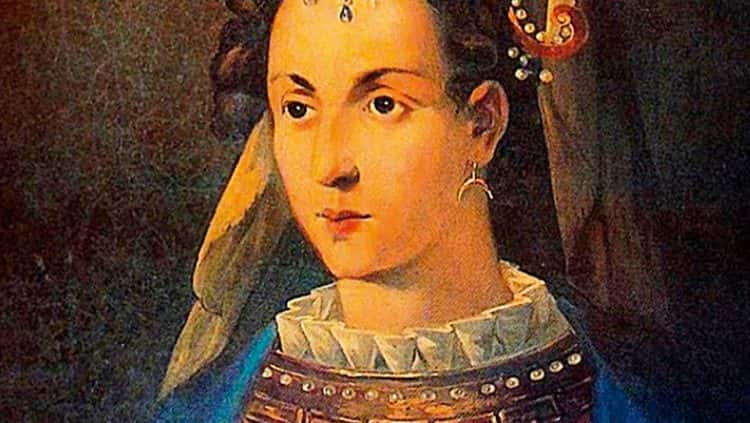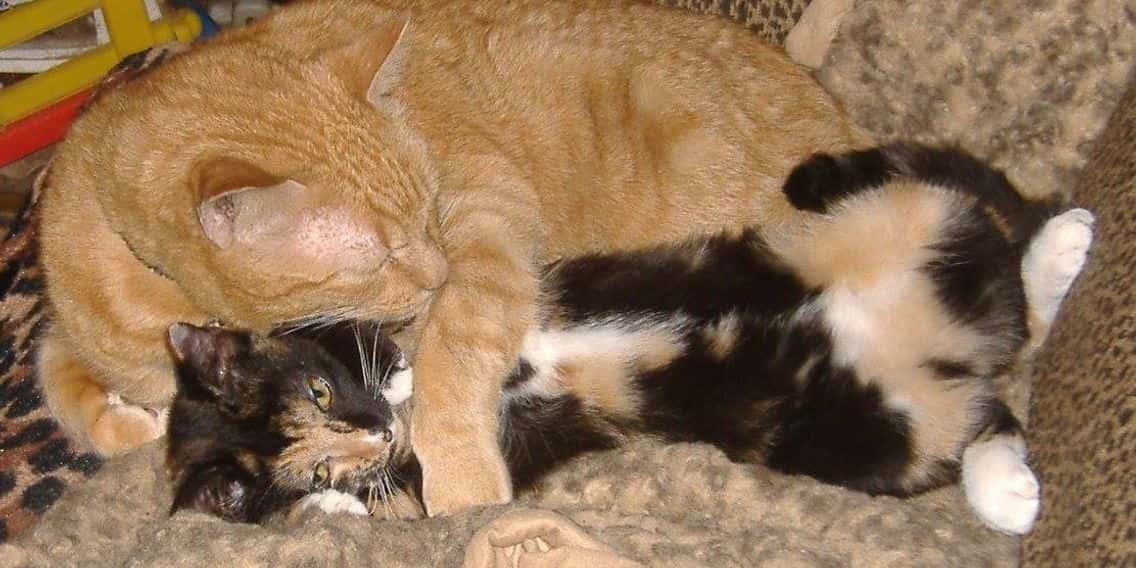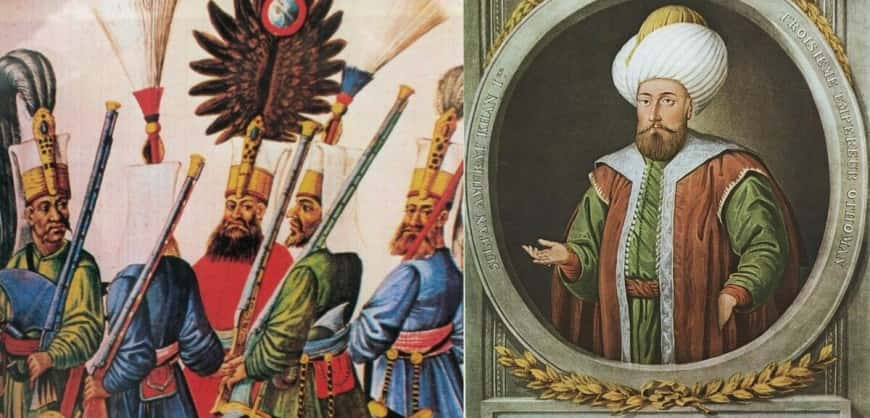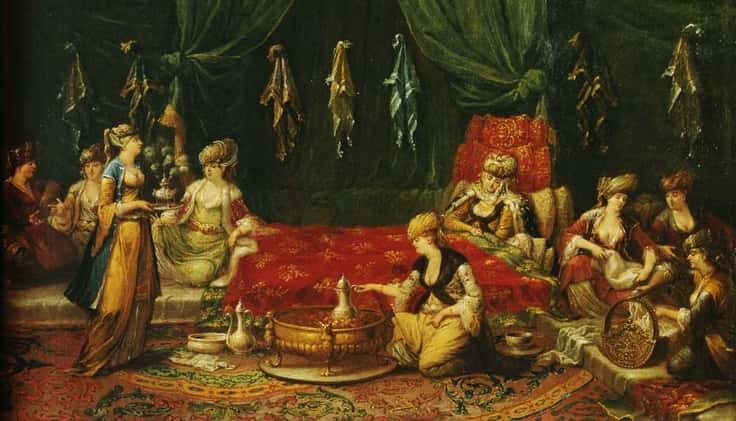“Everybody's a mad scientist, and life is their lab. We're all trying to experiment to find a way to live, to solve problems, to fend off madness and chaos.”—David Cronenberg.
Ibrahim “the Mad” (1615-1648) was the 18th Sultan of the Ottoman Empire. As one might guess, he was not renowned for his sound rule. Inheriting the throne in 1640, Ibrahim also came into a dynasty in turmoil. The House of Osman had gone though a series of child-sultans and unstable regimes, so there was a lot of work to do. Of course, Ibrahim had also been imprisoned in a large cage since the age of two, and he was not about to let a thing like “political instability” and “military coups” stop him from making up for lost time. And what did a “good time” look like to Ibrahim? Harems, fur, taxes, and even more fur.
Some of these stories seem too wild to be true. For gossip-mongers and Europeans too far removed from the source, reports of a decadent, doomed Sultan make easy fiction fodder. As a result, historians still debate on how much of the “Mad” Ibrahim was eccentric-but-true fact and how much was slanderous fiction. That being said, let’s come out of the cage and into the harem with these 42 scandalous facts about Ibrahim, the Mad Sultan of the Ottoman Empire.
Ibrahim Sultan Facts
42. Born to Last
Before he was the “Mad Sultan,” Ibrahim was the baby of a very large family. His father was Sultan Ahmed I of the Ottoman Empire. Ahmed had about 15 kids, including nine sons, from various concubines. Ibrahim was likely the very last child born to Ahmed. Ironically, his low-ranking birth order made it miraculous that he ever ascended to the throne.

41. A Mom Not to Be Messed With
Ibrahim did have a leg up over his half-siblings thanks of his mother, Kösem Sultan. Kösem was the “haseki sultan”—that is, the official favorite concubine—of Ahmed I. She exerted great power during and after the reign of Ibrahim’s father, bearing most of the Sultan’s children and running the harem. Such a formidable mother would be invaluable—and dangerous—for Ibrahim’s political career.
40. Papa, Can You Hear Me?
Unfortunately, Ibrahim‘s father died in 1617 when he just 2 years old. As a result, Ibrahim would probably have no memory of his father or any strong Sultan figure after which he could model himself.
 Illustrated Dad
Illustrated Dad
39. Experience is Priceless
For a guy who didn’t do so great on the throne, Ibrahim sure had a lot of exposure to different reign styles. He lived to see two older brothers and one uncle reign before him: his uncle, Mustafa I (1617-18), his oldest half-brother Osman (1618-22), followed by a brief retaking of the throne by his uncle Mustafa (1622-23), and then finally his predecessor, his full brother Murad IV (1623-40).
 Glorious Ottoman History - Blogger
Glorious Ottoman History - Blogger
38. Hereditary?
Ibrahim was not the first mad Sultan of the Ottoman Empire. Ibrahim’s uncle Sultan Mustafa I was also rumored to be unstable. Mustafa was known for yanking the turbans and beards of state officials in public, as well as feeding coins to fish. Of course, like Ibrahim, Mustafa spent years in a luxury cage…
37. Mr. Lonely
Ibrahim grew up in a glorified cage after the age of 2. Starting in the reign of Ahmed I, the brothers and uncles of the reigning Sultan were kept away in these luxury prisons called “kafes.” Their seclusion was meant to minimize threats of rebellion against the sitting ruler. Unfortunately, such isolation from society cannot have been good for a prince’s mental health, or his statecraft education—two fields in which Ibrahim grew up to flounder at best.
36. Low-Value Target
How did Ibrahim overcome the odds and survive to take the throne? Simply put, he was the youngest boy in a time when Sultans were a bit trigger-happy to execute their next oldest brothers. Ibrahim’s oldest full brother, Prince Mehmed, was murdered in the reign of their half-brother, Osman II, in 1622 when Ibrahim was just 5 years old.
 Sherdog Forums
Sherdog Forums
35. Brother, Can You Spare a Life?
Having a full-blood brother like Murad IV on the throne and a mother around did not improve Ibrahim’s security. Murad was his next oldest brother, and he ascended to the throne in 1623. During Murad’s 17-year reign, Ibrahim witnessed the executions of at least 4 other brothers: Bayezid, Suleyman, Selim, and Kasim. With all this brotherly bloodshed, it would be “mad’ if Ibrahim didn’t grow up at least a little paranoid.
34. Show Me the Body
Ibrahim thought his survival was too good to be true. When state officials came to crown Ibrahim upon Murad IV’s death, the future Sultan refused to believe them. Basically, he thought this was like an elaborate episode MTV’s Punk’d that would end in his execution. When they brought him his big brother’s dead body as proof, Ibrahim literally danced out of his cage in relief.

History's most fascinating stories and darkest secrets, delivered to your inbox daily.
33. Do or Die
Early in his reign, there were fears that Ibrahim might not be “capable” of taking consorts and continuing the royal line. He found it difficult to “perform” with concubines, despite his mother’s supply of aphrodisiacs.
32. Boast with the Most
Rumors of Ibrahim’s sexual tastes may have been exaggerated. Some say he slept with as many as 24 concubines in a single day. When you read about his health problems, that sounds unlikely…but he did father 18 children, so maybe it’s not entirely impossible.
31. The Enthroned Trio
Just like his father, Ahmed I, Ibrahim fathered three future Sultans. These (un)lucky spawn were Mehmed IV, Suleyman II, and Ahmed II.
 GenoPro
GenoPro
30. I’m Taking You with Me
Not for the first or last time, Ibrahim’s mom saved his life. Even as Sultan Murad IV lay dying with no sons to inherit after him in 1640, Murad still tried to build Ibrahim’s execution into his will. Such an act would have annihilated the entire male line of the dynasty. Obviously, Kösem and the government ensured Murad’s wish did not come true. Still, that’s some royal bitterness, bro.
29. And Then There Was One
When Ibrahim inherited the empire in 1640, he was the last living prince of the entire dynasty. In effect, this man was the only thing between the House of Osman and oblivion. Welp.
28. The Big Splash
This is arguably the most repeated tale about Ibrahim’s alleged “madness”: according to lore, Ibrahim ordered his entire harem of 280 women to be drowned in the sea based on rumors of disloyalty. Many have repeated this story, but some have pointed out there’s no scholarly, historical source for it. Especially since the mass murder of the entire harem should have warranted some intervention from his powerful mother, Kösem. It’s a juicy story, but it’s one that doesn’t hold water.
27. Cup of Sugar
At some point, Ibrahim reportedly became intrigued with the “parts” of a female cow—probably the udders. He then had the cow modeled in gold and sent all over the Ottoman Empire, in search of a human woman who could be “made” with such anatomy. While we’re sure they didn’t get the anatomy just right, a large Armenian woman of similar proportions was found for him. Her name was Sechir Para or “Sugar Cube,” and it’s sometimes said he made her into the Governor General of Damascus.
 YouTube
YouTube
26. Headhunters
Ibrahim’s mental health problems were paired with physical illness. He suffered from lifelong headaches and bouts of weakness. Some figures are court leverage his illness to gain wealth for themselves
25. Long Con
In 1645, Ibrahim started a 24-year long war with Venice. Crete was Venice’s last major overseas holding and they were not won to give it up easily. After pirates landed on the island in 1644, Ibrahim was encouraged to take it for the empire. Unfortunately, he did not live to see this project through.
24. Bald Ambition
Besides maybe his wife, the great love of Ibrahim’s life was fur. According to some sources, he would shave his own cats and insist that capes were a much better use for their sable fur. I’m not sure they would agree.
23. Hair is Fair
For his wedding, Ibrahim ordered a lord to carpet his entire palace in furs—and then surrender said furry abode to the Sultan’s new bride.
22. All That Glitters
Sultans did not typically marry in the 17th century, but Ibrahim was always one to break tradition. In 1647, Ibrahim married his eighth and final “favorite” concubine, Hümaşah Sultan. Because her hair was adorned with the traditional gold and silver threads, tels, she became known to the people as “Telli Hatun.”
21. Throwing the Fatherhood Race
After the birth of his first son, Prince Mehmed, Ibrahim became fond of his wet nurse’s son, who was healthier than his own prince. The prince’s mother, Turhan, became jealous and dared to complain to the Sultan. In response, Ibrahim flew into a rage, took Mehmed from Turhan’s arms, and threw the infant into a pool. Thankfully, Mehmed didn’t drown. However, some say the boy carried a scar on his forehead for the rest of his life.
20. Ottoman’s Eight
Most Sultans had one “haseki” sultan, aka the favorite concubine, hence the “favorite” part of that title. Throwing out tradition, Ibrahim had 8 standing favorites at once by the end of his life. In order, these unlucky ladies Turhan, Aşub, Muazzez, Ayşe, Manihever, Saçbağı, Şivekar, and finally his only legal wife, Hümaşah. Eighth time was the charm.
19. Allowance Angst
Not all favorites were made equal. Generally, favorite consorts of the Ottoman harem received an income of 1,000 aspers a day. However, Ibrahim gave his second, Aşub Sultan, 1,300 a day, while the rest received the standard income. What a slight to the one who came first.
 osmanli.site
osmanli.site
18. Washed Up
Going against protocol, Ibrahim forced his sisters and niece to serve his favorite consort at meals. Standing at attention like servants, the princesses were ordered to hold and fetch the slave concubine’s washing basin, soap, and napkins as needed. Some have theorized he specifically singled out the daughters and granddaughter of his mother for service to lash out at mommy dearest.
 Pinterest
Pinterest
17. Show Me the Sugar
Ibrahim split the entire treasury of Egypt between his two “favorites,” Saçbağı and Hümaşah.
16. Big Mama’s House
Kösem Sultan was regent of the Ottoman Empire twice, but she was not “officially” regent to Ibrahim. His older brother, Murad IV, had been a child when he came to the throne, but Ibrahim came to be Emperor as an adult. Ostensibly, he had no need for a regent. However, Ibrahim was frequently ill with mental and physical woes, so Kösem basically served in a Regent capacity anyways. It’s good to have help from mom.
15. The Motherlode of Rebellions
Obviously, Kösem’s ability to control her son was not absolute. In the aftermath of a failed coup against Ibrahim in 1647, her son executed his mother’s allies and forcefully exiled her from the palace. Not long after, the Janissary corps rebelled against Ibrahim themselves. Maybe he needed mom’s help after all.
 Pinterest
Pinterest
14. The Son Sets
His mother might have thrown him to the wolves to stay in power. But some suggest she simply caved in to pressure from the Janissary’s agenda. Still, Kösem publicly condemned her son and is reported to have said, "In the end he will leave neither you nor me alive. We will lose control of the government. The whole society is in ruins. Have him removed from the throne immediately."
13. The One and Only
No crowned Sultan after was named Ibrahim again. Did his name become taboo for some reason?
12. I Leave in Peace
His successor and eldest son, Mehmed IV, would be forcefully deposed as well. Fortunately, Mehmed went in peace and did not meet the same violent end as his father.
11. Glass Houses
Ibrahim’s taste in décor left something to be desired. He reportedly liked his bedroom to be filled with mirrors. This made it both comfortable and easy to see himself “in action” at every angle.
 Pinterest
Pinterest
10. Freakonomics
Imagine if your shopping sprees wrecked a national economy? Some sources blame Ibrahim’s peculiar consumption tastes for driving up the price of key goods. For example, he loved to drink amber in coffee. As a result, the price of amber was said to have skyrocketed from royal demand.
 Pinterest
Pinterest
9. Fur Real Finances
To fund his love of furs, Ibrahim imposed special taxes upon Ottoman ministers and governors. The sound public policy basically ensured his future fate.
8. Buy Beware
Not all stories about Ibrahim frame him as a selfish ruler. Early in his reign, it was rumored he would disguise himself as a commoner and inspect the local affairs for himself. What did he see?
7. Make It Work
When you’re known as “the Mad,” you better embrace the aesthetic. Ibrahim was said to favor to flowers in his hair and jewels in his beard. He wasn’t good at ruling, but it sounds he would have made a great stylist.
6. Road Rage
In 1647, it’s said that Ibrahim executed a leading government official for blocking traffic. After a rough commute through Istanbul, the Grand Vizier had been ordered to ban carriages from the city. When the ban failed to ease traffic, the Sultan promptly fired and beheaded his statesman for the failure of his idea. In truth, the execution was probably for more complicated, boring reasons, but the story certainly reveals how the people viewed Ibrahim as dangerously petty.
5. Into the Cage you Go
Kösem did not mean to sacrifice her son completely. In 1648, the queen mother had surrendered Ibrahim on the condition that the Janissaries would simply imprison him and spare him from death. For a while, it looked liked Ibrahim would simply be re-condemned to the golden cage in which he grew up...
4. End of an Erratic Era
No one wanted this Mad Dad to threaten the reign of his newly enthroned seven-year-old son, Mehmed IV. After 10 days of wailing in the kafes, Ibrahim was met with executioners. On August 18, 1648, he was strangled to death in the golden cage like his brothers before him.
3. Giddy Up
One of the more popular chronicles of Ibrahim’s tastes leaves little to the imagination: some say Ibrahim liked to chase naked woman around his garden. It’s not an unpopular male fantasy, until you get to the part where he did this while “neighing like a stallion.”
2. How Mad?
Ibrahim was certainly eccentric. But was he truly mad? One chronicler insisted that the Sultan was “by no means out of his mind,” and that rumors of evil and villainous “madness” where made up after to justify his violent deposition. Only those who knew him know the answer.
 YouTube
YouTube
1. Folie à Deux in Death
Ibrahim was buried at the Hagia Sophia Mosque next to his uncle, “Mad” Mustafa I.









































